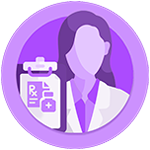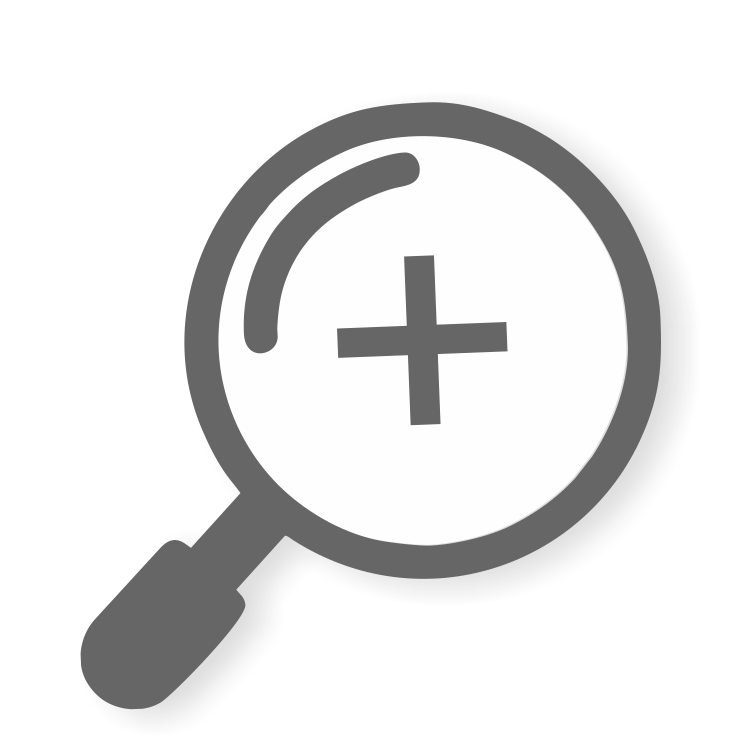PCOD (Polycystic Ovarian Disease) and PCOS (Polycystic Ovary Syndrome) are sometimes used interchangeably, however, there are significant distinctions in their definitions, diagnostic criteria, and health consequences, which we shall discuss in this blog.
Introduction to PCOD and PCOS
Polycystic Ovarian Syndrome (PCOS) and Polycystic Ovarian Disease (PCOD) are disorders that affect the ovaries and hormonal balance in people, especially women. Here's an introduction for both:
-
Polycystic Ovarian Syndrome (PCOS): PCOS is a hormonal illness that affects women of reproductive age. It is distinguished by hormonal imbalance, irregular menstrual cycles, and the formation of tiny cysts on the ovaries. irregular menstruation periods (amenorrhoea or oligomenorrhea). Excess androgen hormones cause symptoms like acne, hirsutism (excess hair growth on the face or body), and male-pattern baldness. Polycystic ovaries (many tiny cysts on the ovaries as shown on ultrasound) The specific etiology of PCOS is unknown, however, it is thought to be a combination of hereditary and environmental factors, insulin resistance, and hormone abnormalities.
-
Polycystic Ovarian Disease (PCOD): PCOD is an older term that is commonly used interchangeably with PCOS. It refers to the existence of numerous cysts on the ovaries without having met all of the diagnostic requirements for PCOS. Traditionally, the diagnosis is based on ultrasound imaging, which shows many tiny cysts on the ovaries. It may or may not be connected with symptoms such as irregular periods or an increase in testosterone levels.
What is PCOD?
PCOD stands for Polycystic Ovarian Disease. It is a word that has long been used interchangeably with Polycystic Ovary Syndrome. However, in more exact medical language and practice, PCOD is commonly defined as a disorder marked by the presence of numerous cysts (fluid-filled sacs) on the ovaries. These cysts are typically tiny, measuring 2 to 9 mm in diameter, and can be seen on ultrasound imaging of the ovaries.
What is PCOS?
The acronym PCOS stands for Polycystic Ovary Syndrome. It is a prevalent hormonal illness among women of reproductive age, with symptoms that can vary greatly in presentation and severity. PCOS is one of the most common endocrine disorders in women, and it can have serious consequences for reproductive, metabolic, and general health.
Key Differences Between PCOD and PCOS

While PCOD and PCOS have parallels in terms of ovarian cysts, PCOS is a more comprehensive illness that includes hormonal abnormalities and metabolic problems. Understanding these distinctions is important for accurate diagnosis and treatment customized to the patient's specific symptoms and health risks. Healthcare specialists, such as gynecologists and endocrinologists, play an important role in accurately identifying and controlling PCOS.
Symptoms and Causes of PCOD and PCOS

PCOD (Polycystic Ovarian Disease):
-
Irregular Menstrual Cycles: Women with PCOD frequently have irregular periods, which can be infrequent (oligomenorrhea) or nonexistent.
-
Ovarian Cysts: The presence of many tiny cysts on the ovaries, which are usually apparent on ultrasound imaging, is the defining feature of PCOD.
-
Hormonal Imbalances: PCOD may be linked to hormonal imbalances, including high levels of androgens (male hormones) like testosterone. This can cause acne, hirsutism (excessive hair growth), and male-pattern baldness.
-
Metabolic Issues: Insulin resistance is commonly seen in women with PCOD, which can lead to elevated insulin levels and an increased risk of developing type 2 diabetes.
-
Infertility: Due to irregular ovulation or anovulation (lack of ovulation), PCOD can contribute to infertility or difficulty conceiving.
PCOS (Polycystic Ovary Syndrome):
-
Irregular Menstrual Cycles: Women with PCOS frequently have irregular periods, which can be infrequent (oligomenorrhea) or absent.
-
Hyperandrogenism: PCOS is defined by elevated levels of androgens (male hormones), such as testosterone, which causes acne, hirsutism (excess hair growth), and male-pattern baldness.
-
Polycystic Ovaries: On ultrasound examination, women with PCOS may have enlarged ovaries with multiple small follicles (cysts) located along the outer edge.
-
Metabolic Issues: Insulin resistance is common in women with PCOS, which can lead to elevated insulin levels, weight gain, and an increased risk of type 2 diabetes and cardiovascular disease.
-
Infertility: Irregular ovulation or anovulation (lack of ovulation) can make it difficult for women with PCOS to conceive.
-
Other Symptoms: Additional symptoms may include weight gain or difficulty losing weight, oily skin or dandruff, sleep apnea, and psychological effects such as anxiety or depression.
Common Symptoms of PCOD
PCOD is a complicated illness characterized by hormonal abnormalities, ovarian cysts, and metabolic issues. The symptoms of PCOD can vary greatly between individuals, and not all women with PCOD will have the same combination or degree of symptoms. Prompt diagnosis and management by healthcare specialists, such as gynecologists or endocrinologists, can assist PCOD patients in alleviating symptoms, reducing health risks, and enhancing their overall quality of life.
Common Symptoms of PCOS

PCOS is a complex disorder with a wide range of symptoms that can affect many aspects of a woman's health and well-being. The mix and intensity of symptoms in people with PCOS can vary greatly, thus healthcare specialists like gynecologists and endocrinologists must conduct a complete evaluation and provide personalized therapy options. Early diagnosis and proper care can help women with PCOS lessen symptoms, reduce long-term health concerns, and enhance their overall quality of life.
Underlying Causes of PCOD and PCOS
PCOD and PCOS share hormonal abnormalities, ovarian cysts, and metabolic problems, however, they have different underlying causes. PCOD is largely connected with ovarian morphology (the presence of cysts), whereas PCOS comprises a broader hormonal and metabolic imbalance. Understanding the underlying causes is critical for appropriate diagnosis and care of these disorders, to relieve symptoms, lower health risks, and improve the overall quality of life for those affected.
Diagnosis and Treatment Options

Diagnosis
-
PCOD (Polycystic Ovarian Disease) diagnosis includes medical history and symptoms, physical examination, ultrasound imaging, and laboratory tests (such as androgens (testosterone, DHEAS), LH (luteinizing hormone), FSH (follicle-stimulating hormone), and possibly insulin levels to assess insulin resistance).
-
PCOS (Polycystic Ovary Syndrome) diagnosis includes the Rotterdam Criteria, a medical history and physical examination, blood tests, and ultrasound imaging.
Treatment Options for PCOD and PCOS:
-
Lifestyle Changes: Prioritise balanced nutrition, focusing on whole grains, lean proteins, fruits, and vegetables. Avoiding processed foods and excessive sugar consumption may aid with insulin regulation. Physical activity can boost insulin sensitivity and aid in weight management, which is useful for both PCOD and PCOS. Achieving and maintaining a healthy weight can help alleviate symptoms and restore hormonal balance.
-
Medications: Oral contraceptives can help regulate menstrual periods, lower testosterone levels, and improve acne and hirsutism in women with PCOD or PCOS. Spironolactone, for example, may be used to lower testosterone levels and alleviate hirsutism and acne symptoms. Metformin is primarily used to treat PCOS and may increase insulin sensitivity, regulate menstrual cycles, and lower androgen levels.
-
Fertility Treatments: Medications such as clomiphene citrate or letrozole may be prescribed to induce ovulation in women with PCOS who are trying to conceive. In cases of infertility, procedures like intrauterine insemination (IUI) or in vitro fertilization (IVF) may be recommended.
-
Management of Specific Symptoms: Topical treatments (like benzoyl peroxide or retinoids) or oral antibiotics may be prescribed for acne management. Options include topical treatments (like eflornithine cream) or procedures such as electrolysis or laser hair removal.
-
Psychological Support: Managing the emotional and psychological aspects of PCOD and PCOS, which can include anxiety, depression, and body image issues, is crucial. Counseling or support groups may be beneficial.
How PCOD is Diagnosed
PCOD is diagnosed using a thorough method that includes a medical history assessment, physical examination, ovarian ultrasound imaging, and hormone testing. This procedure allows healthcare experts to confirm the presence of ovarian cysts, evaluate hormonal abnormalities, and rule out other possible explanations of comparable symptoms. Early diagnosis and effective care are critical for addressing symptoms, managing long-term health concerns, and improving the overall quality of life for those with PCOD. Seeking advice from a healthcare specialist, such as a gynecologist or endocrinologist, is critical for correct diagnosis and personalized treatment planning.
How PCOS is Diagnosed
PCOS diagnosis necessitates a complete approach that includes a medical history assessment, physical examination, hormone testing, and ovarian ultrasound imaging. This procedure allows healthcare experts to confirm the presence of ovarian cysts, evaluate hormonal abnormalities, and rule out other possible explanations of comparable symptoms. Early detection and effective management are critical for addressing symptoms, managing long-term health risks (such as insulin resistance and cardiovascular disease), and improving the overall quality of life for those with PCOS. Seeking advice from a healthcare specialist, such as a gynecologist or endocrinologist, is critical for an accurate diagnosis and personalized treatment plan.
Treatment Strategies for PCOD
The treatment for PCOD is tailored to each woman's specific symptoms and health goals. A multidisciplinary team of gynecologists, endocrinologists, dietitians, and possibly mental health doctors can provide comprehensive care. The basic goals of treatment are to relieve symptoms, restore hormonal balance, enhance reproductive results (if desired), and reduce the long-term health concerns associated with PCOD. Early intervention and lifestyle changes are critical for effectively managing PCOD and improving overall well-being.
Treatment Strategies for PCOS
PCOS treatment is personalized to each patient's specific symptoms, health goals, and fertility goals. A multidisciplinary team of gynecologists, endocrinologists, dietitians, and mental health practitioners can provide comprehensive care. The basic goals of treatment are to relieve symptoms, restore hormonal balance, enhance reproductive results if desired, and lower the long-term health concerns associated with PCOS. Early intervention, lifestyle changes, and personalized medical management are critical for effectively managing PCOS and improving overall well-being.
Managing Lifestyle for PCOD and PCOS

Women with Polycystic Ovary Syndrome (PCOS) and Polycystic Ovarian Disease (PCOD) must properly manage their lifestyles to relieve symptoms, restore hormonal balance, and avoid long-term health concerns. Here are some basic lifestyle recommendations that can help people with PCOS and PCOD:
-
Healthy Diet: fruits, and vegetables. Limit your intake of processed foods, sugary snacks, and beverages. Choose carbs that are low in blood sugar, such as whole grains (e.g., brown rice, quinoa), legumes, and non-starchy vegetables. Include healthy fats like avocados, nuts, seeds, and olive oil, while limiting saturated fats and avoiding trans fats. Eat regular meals and snacks throughout the day to keep blood sugar levels constant and insulin variations to a minimum.
-
Regular Physical Activity: Engage in moderate-intensity aerobic activities such brisk walking, running, cycling, or swimming for at least 150 minutes per week (as advised by guidelines). Include strength training activities using weights or bodyweight workouts to increase muscle mass, improve metabolism, and improve insulin sensitivity. These activities can help relieve stress, increase flexibility, and boost general health.
-
Weight Management: Aim for a gradual and sustainable weight loss if overweight or obese. Even a modest weight loss (5-10% of body weight) can improve symptoms of PCOS and PCOD. Consider working with a registered dietitian to develop personalized meal plans and strategies for weight management.
-
Stress Management: Practice stress-reducing techniques such as deep breathing, meditation, mindfulness, or yoga to lower cortisol levels and improve hormonal balance. Organize daily activities and prioritize tasks to reduce feelings of overwhelm and stress. Aim for 7-9 hours of quality sleep each night to support hormone regulation and overall health.
-
Avoiding Harmful Substances: If you drink alcohol, do so in moderation, as excessive alcohol consumption can disrupt hormone levels and affect overall health. Smoking can worsen insulin resistance and increase cardiovascular risks associated with PCOS and PCOD.
-
Regular Health Monitoring: Schedule regular visits with healthcare providers to monitor hormone levels, assess symptoms, and evaluate any potential complications (such as insulin resistance, and cardiovascular risks). Depending on individual risk factors, screening for conditions like diabetes, high cholesterol, and hypertension may be recommended.
-
Support Network and Education: Joining support groups or online communities for PCOS and PCOD can provide valuable emotional support, shared experiences, and practical tips for managing the condition. Stay informed about PCOS and PCOD through reliable sources, such as healthcare providers, reputable websites, and patient education materials.
Dietary Changes for Better Health

Dietary adjustments can considerably improve health outcomes for people with PCOS and PCOD by addressing hormonal imbalances, controlling insulin resistance, and promoting general wellness. Here are some important dietary suggestions.
-
Emphasise Whole Foods: Choose whole grains such as brown rice, quinoa, oats, and whole wheat bread over processed grains. These have a lower glycemic index (GI), allowing for improved blood sugar regulation. Include a range of colorful fruits and non-starchy vegetables in your diet to receive enough vitamins, minerals, and antioxidants. Choose lean proteins such as fowl, fish, tofu, lentils, and beans. Protein promotes satiety and muscular mass.
-
Healthy Fats: Include omega-3-rich foods such as fatty fish (salmon, mackerel, sardines), flaxseeds, chia seeds, and walnuts. Omega-3s are anti-inflammatory and promote heart health. Consume monounsaturated fat-rich foods such as avocados, olive oil, and nuts (almonds, peanuts) in moderation.
-
Manage Insulin Levels: Limit your intake of sugary beverages, desserts, sweets, and processed snacks that can cause blood sugar spikes. To help keep blood sugar levels stable throughout the day, eat balanced meals that include carbohydrates, proteins, and healthy fats.
-
Foods to Include: Fiber-rich foods such as whole grains, fruits, vegetables, and legumes enhance digestive health and assist in regulating blood sugar levels. Choose low-fat or fat-free dairy products like milk, yoghurt, and cheese to get enough calcium without consuming too much-saturated fat.
-
Foods to Limit or Avoid: Limit your intake of trans fats (found in processed meals) and saturated fats (found in fatty meats and full-fat dairy products), as they can exacerbate insulin resistance and inflammation. Reduce your use of processed foods, fast food, and packaged snacks, which frequently have extra sugars, harmful fats, and preservatives.
-
Hydration: Drink plenty of water throughout the day to stay hydrated and support overall health. Limit sugary beverages and alcohol.
-
Personalized Approach: Consider consulting with a registered dietitian who specializes in PCOS and PCOD to create a personalized meal plan tailored to your specific needs, preferences, and health goals.
Exercise and Physical Activity Recommendations

Regular exercise and physical activity are necessary for successfully controlling PCOS and PCOD. Maintaining an active lifestyle, in conjunction with dietary adjustments, stress management, and appropriate medical therapy, can improve overall health outcomes, ease symptoms, and improve the quality of life for people suffering from these conditions. Finding activities that you enjoy and can stick with long-term is essential for making fitness a regular part of your schedule.
Importance of Regular Medical Check-Ups
Regular medical check-ups are essential for people with PCOS and PCOD to monitor their health, properly manage symptoms, and limit the risk of problems. There are various reasons why frequent medical check-ups are vital.
-
Monitoring Symptoms and Progress: Regular blood tests can detect hormone levels like as testosterone, the LH/FSH ratio, and insulin. This aids in determining the efficacy of treatment and changing drugs as needed. Transvaginal ultrasound tests can evaluate the size and appearance of the ovaries, finding any changes or issues such as ovarian cysts.
-
Early Detection of Complications: Regular insulin resistance and glucose level tests can aid in the early detection of prediabetes or diabetes. Managing these diseases can help lower the risk of cardiovascular disease and other problems. Women with PCOS are more likely to develop cardiovascular disease, hence it is critical to monitor blood pressure, cholesterol levels, and analyze cardiovascular risk factors (such as BMI and waist circumference). Women who have irregular menstrual cycles or go lengthy periods without menstruating are more likely to develop endometrial hyperplasia or cancer. These hazards can be monitored with regular check-ups.
-
Treatment Optimisation: Regular visits enable healthcare practitioners to evaluate the efficacy of medications provided to treat symptoms such as irregular periods, acne, hirsutism, and infertility. Healthcare practitioners can offer continuing advice on food, exercise, stress management, and other lifestyle aspects that are important in controlling PCOS and PCOD.
-
Emotional and Mental Health Support: Regular check-ups allow you to address your emotional well-being, stress management skills, and any worries you have about mental health disorders like anxiety or depression, which are often associated with these conditions.
-
Patient Education and Empowerment: Regular appointments help people to keep informed about their illness, grasp the most recent research and treatment options, and ask questions so they may make informed health decisions. Healthcare practitioners can teach patients about self-care techniques, symptom management, and when to seek medical assistance for worsening symptoms or new concerns.
-
Prevention and Long-term Health Planning: Routine check-ups assist in establishing a baseline for health indicators and allow for proactive management to avoid issues related to PCOS and PCOD. Regular visits can help women plan their pregnancy by optimizing fertility medicines, monitoring ovulation induction methods, and addressing any fertility-related issues.
Conclusion: Navigating PCOD and PCOS for Better Health

Navigating PCOS and PCOD requires a personalized approach that considers both medical and lifestyle aspects. Working closely with healthcare experts, adopting healthy habits, and obtaining emotional support can help women manage symptoms, improve fertility results, and lower long-term health risks linked with hormone problems. Individuals can attain better health and well-being with diligence and comprehensive care, so improving their quality of life in the face of PCOS and PCOD difficulties.


















